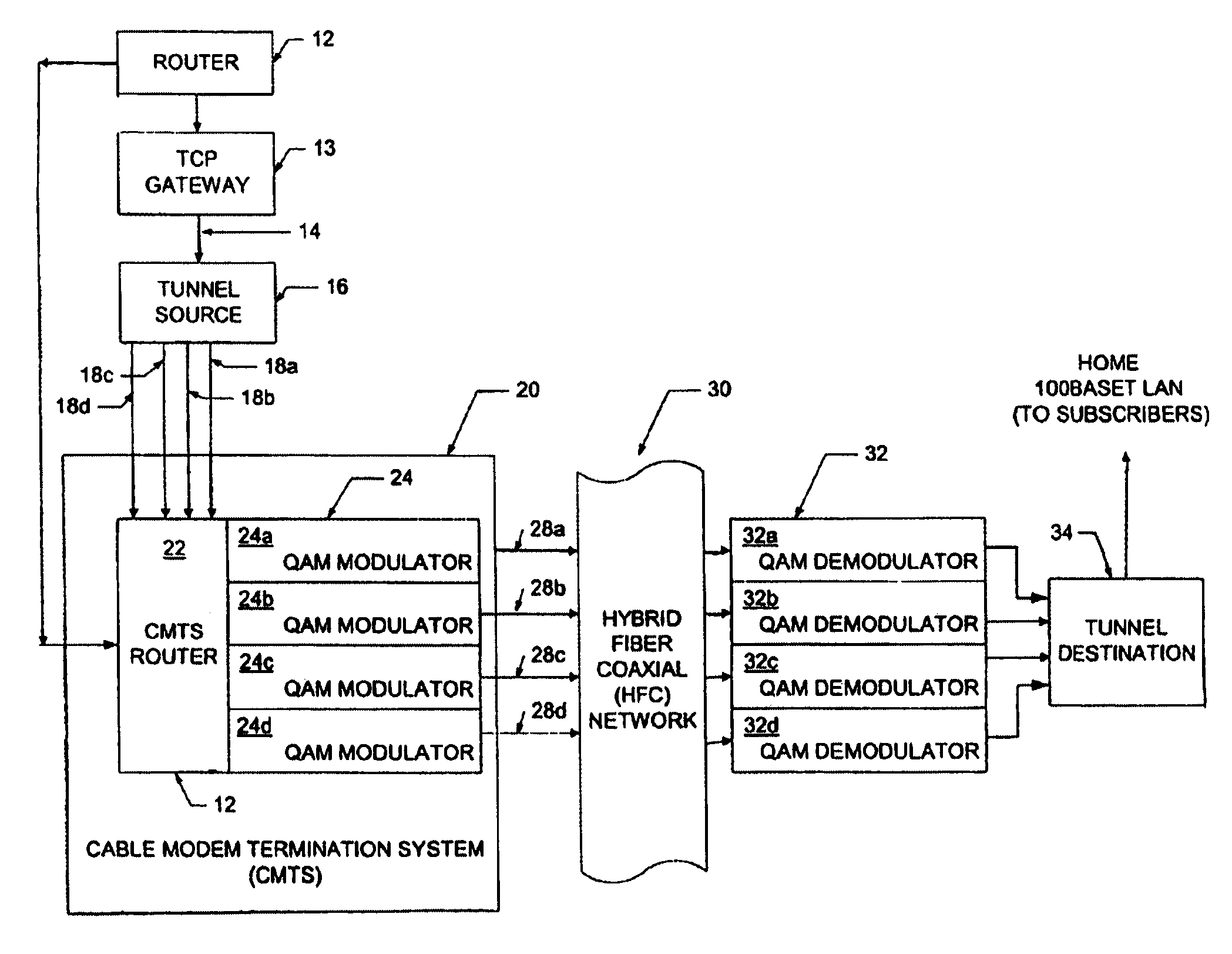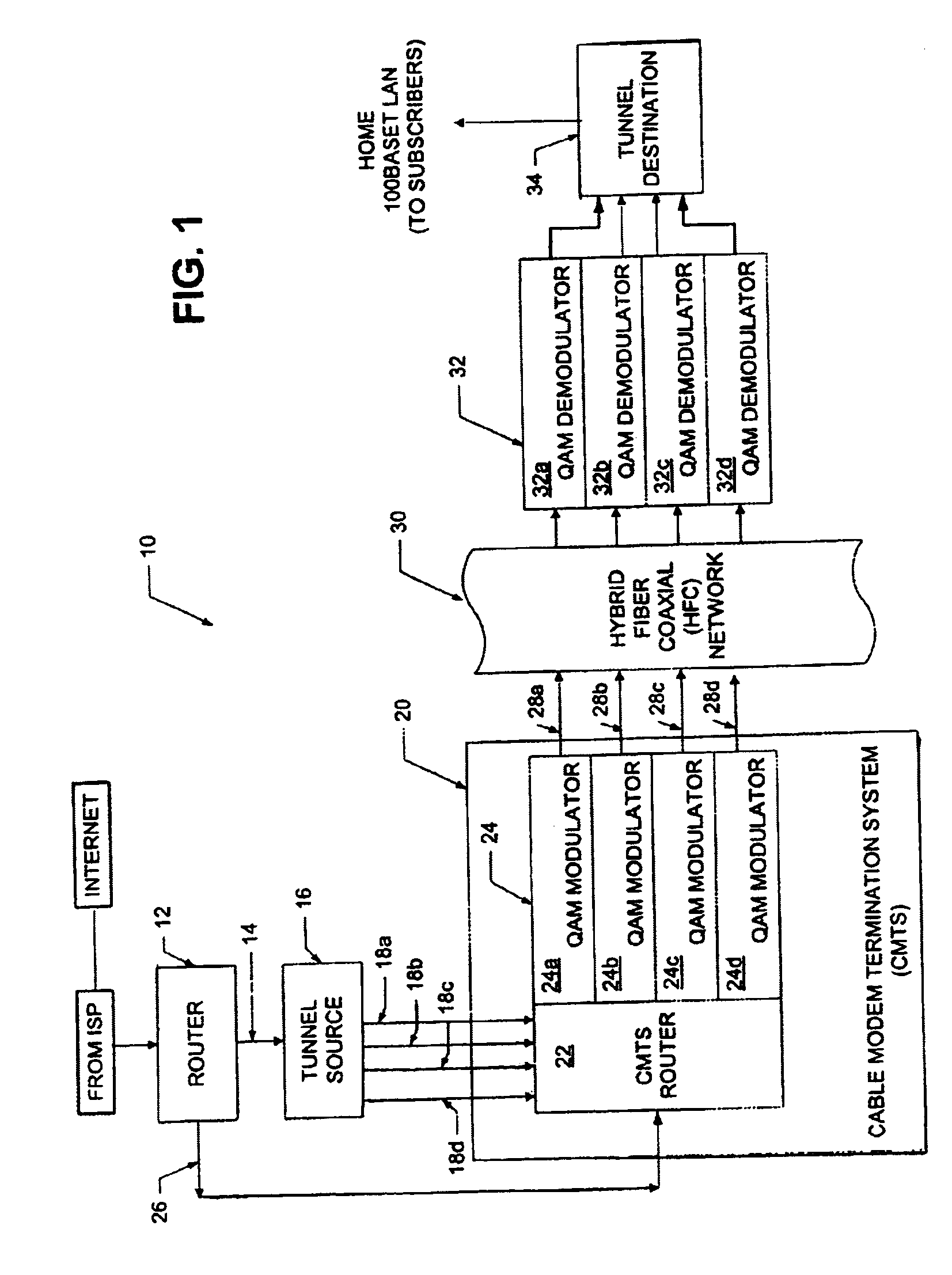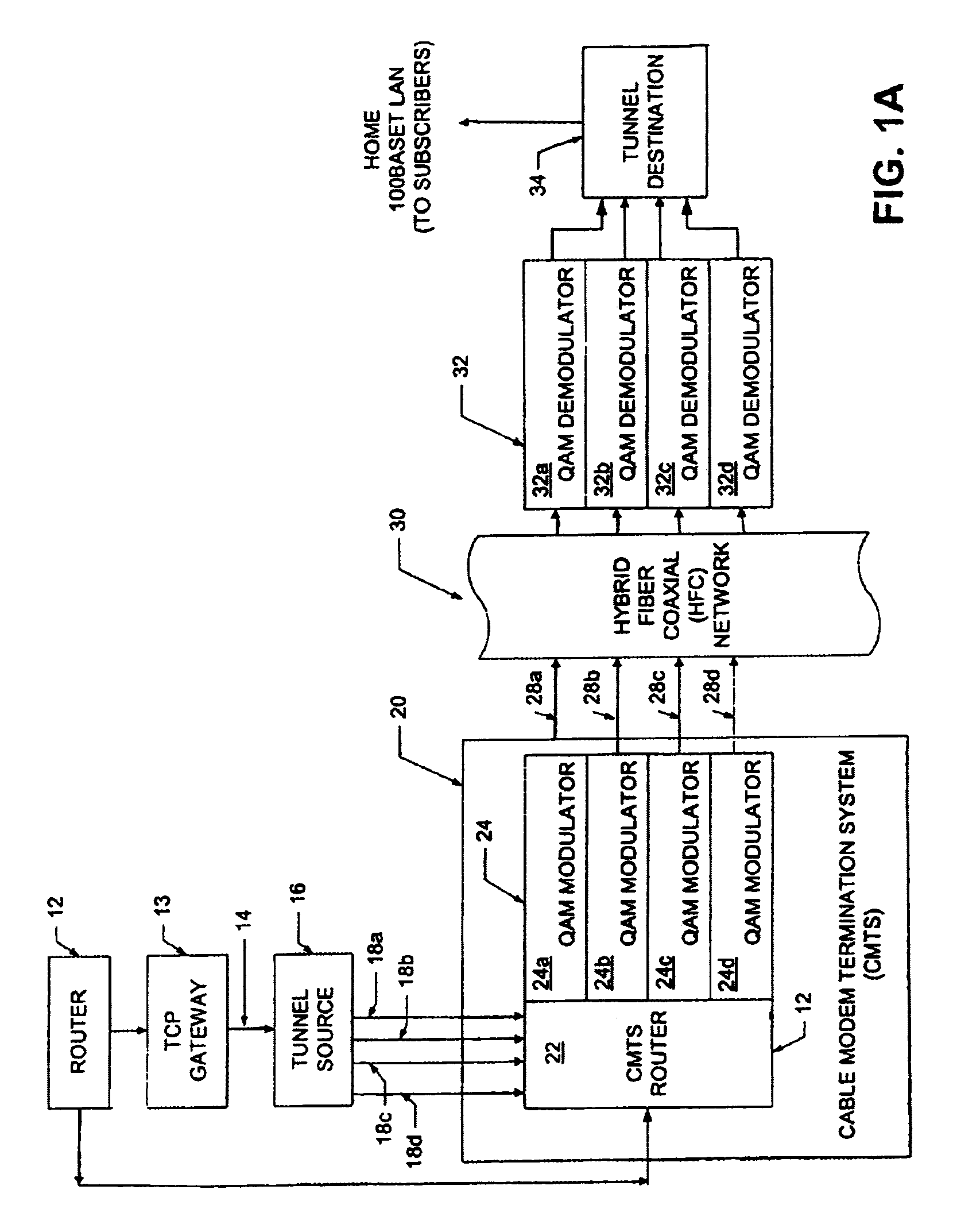Transmit and receive system for cable data service
a technology of cable data and transmission system, applied in the field of data service, can solve the problems of system signal-to-noise ratio (snr) demands, current system might not be able to meet, etc., and achieve the effect of improving the peak ra
- Summary
- Abstract
- Description
- Claims
- Application Information
AI Technical Summary
Benefits of technology
Problems solved by technology
Method used
Image
Examples
Embodiment Construction
[0026]Referring now to FIG. 1, a downstream path of a transmission system 10 includes a first router 12 coupled to a tunnel source (also referred to as a sending tunnel end-point) 16 through a first signal path 14 (referred to hereinbelow as a FastChannel path). Tunnel source 16 is coupled to a cable modem termination system (CMTS) 20 through a second signal path 18 here shown as signal paths 18a–18d. It should be appreciated that the tunnel source 16 can functionally reside in a separate box upstream of the CMTS 20 as shown in FIG. 1. Alternatively, however, the tunnel source 16 can functionally reside within the CMTS 20 or the router 12. The CMTS 20 includes a CMTS router 22 and a plurality of quadrature amplitude modulators (QAMs) 24a–24d generally denoted 24. Router 12 is also coupled to the CMTS 20, and in particular to the CMTS router 22, via a signal path 26. The purpose of the signal paths 14 and 26 will next be described in general overview. In the system of the present inv...
PUM
 Login to View More
Login to View More Abstract
Description
Claims
Application Information
 Login to View More
Login to View More - R&D
- Intellectual Property
- Life Sciences
- Materials
- Tech Scout
- Unparalleled Data Quality
- Higher Quality Content
- 60% Fewer Hallucinations
Browse by: Latest US Patents, China's latest patents, Technical Efficacy Thesaurus, Application Domain, Technology Topic, Popular Technical Reports.
© 2025 PatSnap. All rights reserved.Legal|Privacy policy|Modern Slavery Act Transparency Statement|Sitemap|About US| Contact US: help@patsnap.com



